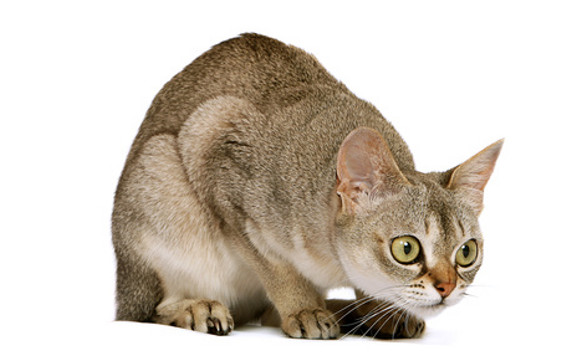Introduction
The Singapura cat, renowned for its small size and unique ticked coat, originates from the streets of Singapore. This guide delves into the breed’s history, characteristics, temperament, and care requirements to provide a comprehensive understanding of these charming felines.
History
The Singapura’s journey began in the 1970s when Tommy and Hal Meadow brought three sepia-colored cats from Singapore to the United States. Despite controversy regarding their origin, these cats became the foundation of the Singapura breed. Officially recognized by the Cat Fanciers’ Association (CFA) in 1982 and granted championship status in 1988, the Singapura gained popularity and even served as a tourism mascot for Singapore.
Characteristics
Singapuras are small, with males weighing around 6 pounds and females about 4 pounds. They possess a ticked tabby coat with alternating bands of color on each hair, giving a refined look. The coat is primarily a warm brown (sepia) with a lighter “old ivory” base, modified by the Burmese gene.
Physical Traits
- Size: Small; males (6 pounds), females (4 pounds)
- Coat: Ticked tabby with sepia color and ivory ground
- Eyes: Large, almond-shaped, typically hazel, green, or yellow
Temperament
Singapuras are affectionate, playful, and highly intelligent. They thrive on human interaction and enjoy being the center of attention. These cats are known for their curiosity and adaptability, making them excellent companions in various environments. Despite their playful nature, they are less vocal than many other breeds, often communicating through quiet, unobtrusive sounds.
Personality Traits
- Affectionate: Highly people-oriented, enjoys company
- Playful: Remains playful into adulthood
- Curious: Inquisitive and exploratory by nature
- Intelligent: Quick learners and problem solvers
Care Requirements
Singapuras require minimal grooming due to their short coat. Regular brushing can help reduce shedding and keep their coat healthy. Given their active nature, they benefit from interactive toys and activities that stimulate their minds and bodies.
Grooming
- Frequency: Weekly brushing
- Tools: Soft brush or grooming mitt
- Focus Areas: Regular ear cleaning and nail trimming
Health and Nutrition
Singapuras are generally healthy but can be prone to certain genetic conditions. Providing a balanced diet and regular veterinary check-ups is crucial for maintaining their well-being.
- Diet: High-quality cat food tailored to age and activity level
- Health Concerns: Monitor for signs of genetic disorders and maintain regular vet visits
Singapura Controversy
The breed’s history is marked by a notable controversy. In 1990, it was revealed that the original cats might have been bred in the United States before being taken to Singapore. Despite this, the CFA and other organizations continued to recognize the breed, and the Singapura remains a beloved breed worldwide.
Living with a Singapura
Owning a Singapura means having a constant companion who loves to be involved in your daily life. They are excellent with children and other pets, making them ideal for families. Their playful and loving nature ensures they are always seeking interaction and affection.
Suitability
- Families: Great with children and other pets
- Single Owners: Provides companionship and entertainment
- Seniors: Easy to care for, minimal grooming needs
Conclusion
The Singapura cat is a delightful breed, combining a fascinating history with a lovable personality. Their small size, striking appearance, and affectionate nature make them an excellent choice for cat lovers seeking an engaging and friendly companion.

